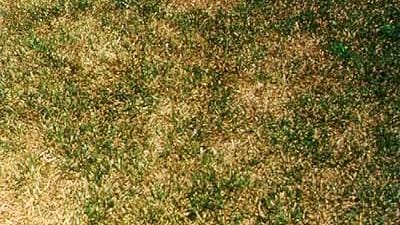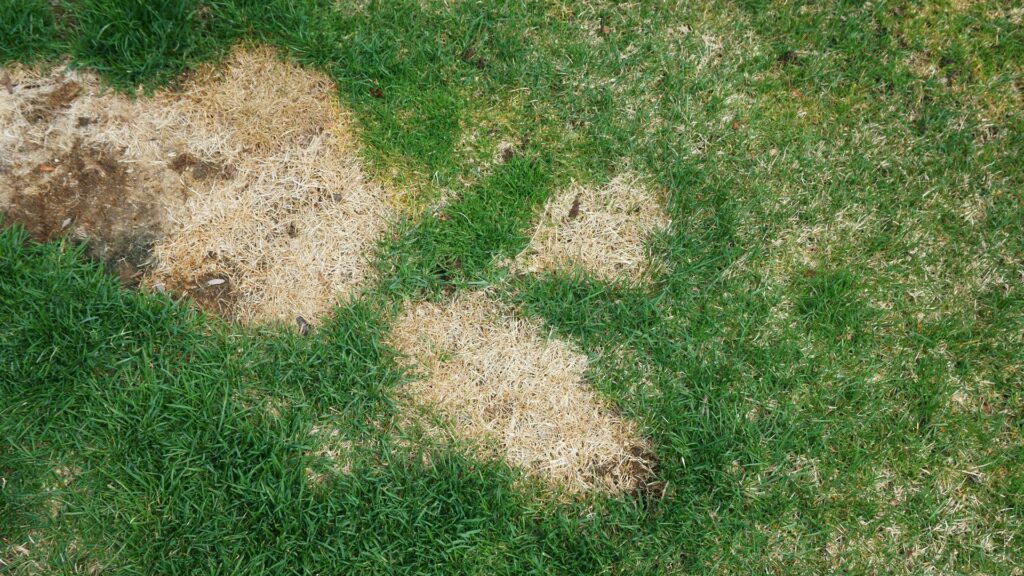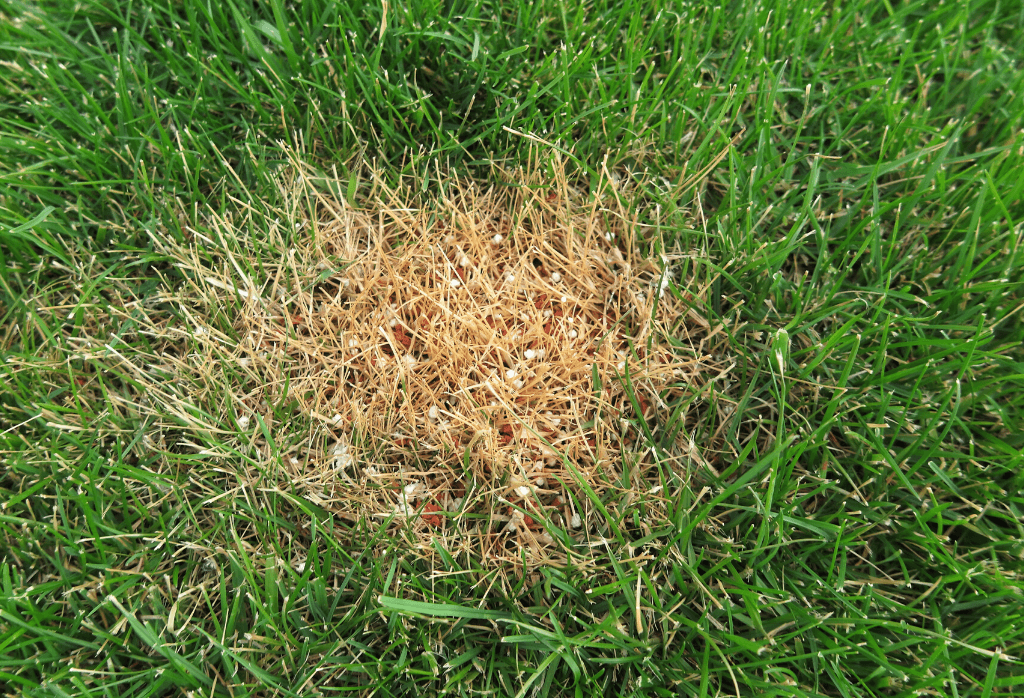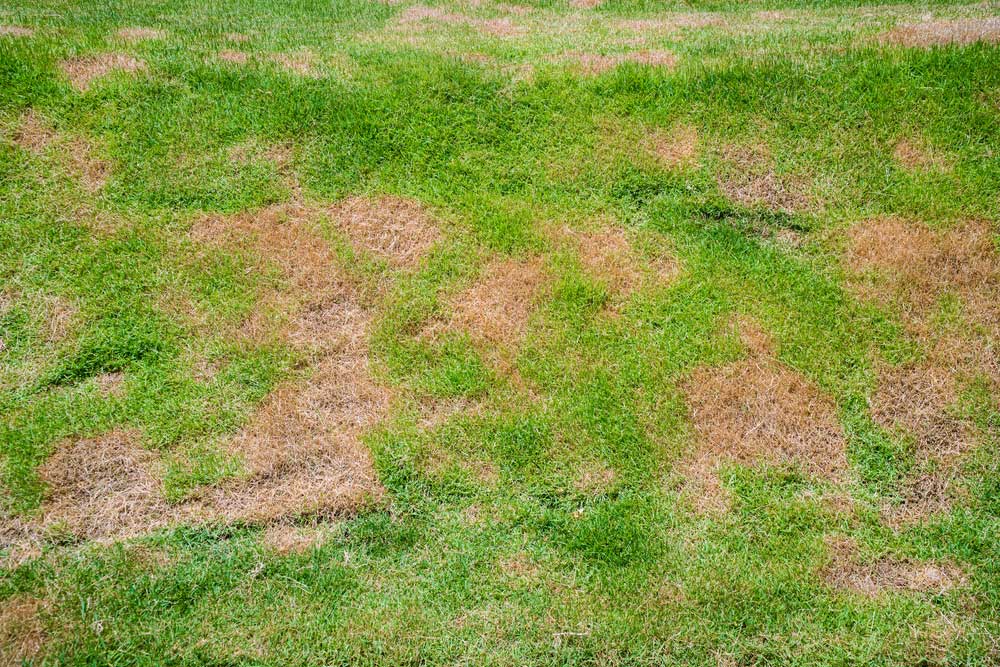Your lawn is supposed to be a lush, green carpet—but instead, you’re seeing brown tips on your grass. Don’t panic. While it’s a common issue, it’s also highly fixable once you understand the root causes.
In this blog post, we’ll break down the top reasons your lawn has brown tips and how you can fix it quickly and effectively to bring back its healthy, green appearance.


One of the most common causes of brown grass tips is improper mowing. Cutting your grass too short (known as “scalping”) can stress your lawn and lead to brown tips or even bare patches.
How to Fix It:
Adjust your mower blade height. Never remove more than one-third of the grass height at a time.
Keep mower blades sharp. Dull blades tear grass instead of cutting it cleanly, causing frayed, brown edges.
Underwatering is another major culprit. Grass needs consistent hydration, especially during hot or dry weather. Brown tips can signal your lawn is thirsty.
How to Fix It:
Water early in the morning (between 6 a.m. and 10 a.m.) to reduce evaporation.
Aim for 1 to 1.5 inches of water per week, either from rain or irrigation.
Deep, infrequent watering encourages strong root growth.
While fertilizer is great for growth, too much of it—especially high-nitrogen fertilizers—can cause “fertilizer burn,” leading to brown or scorched-looking tips.
How to Fix It:
Use a slow-release fertilizer and follow label directions carefully.
Water thoroughly after fertilizing to help nutrients absorb into the soil.
If overfertilized, flush the area with water over a few days to dilute the excess nutrients.
Sometimes, brown tips are a sign of fungal lawn diseases, such as brown patch or dollar spot. These conditions thrive in humid, wet environments.
How to Fix It:
Avoid watering at night.
Improve air circulation by not overcrowding your lawn with heavy thatch or compacted soil.
Use a fungicide if needed, preferably one recommended for your specific grass type.
We mentioned mowing mistakes earlier, but it’s worth repeating: dull mower blades are often the root of brown grass tips. A ragged cut leaves grass vulnerable to disease and drying out.
How to Fix It:
Sharpen mower blades at least once a season.
If you mow frequently (weekly or more), sharpen more often.
If brown spots appear in isolated areas, especially if you have pets, it could be due to urine damage or compacted soil from heavy use.
How to Fix It:
Rinse pet spots with water immediately after urination to dilute the nitrogen.
Aerate your lawn annually to relieve soil compaction.
Train pets to use a designated area or use lawn repair seed blends for damaged patches.
Lawns thrive on consistency. Skipping fertilization or inconsistent watering can weaken your grass, leading to stress and discoloration.
How to Fix It:
Stick to a seasonal lawn care calendar.
Schedule fertilization, aeration, mowing, and watering regularly.
Use a lawn journal or app to keep track of your routine.
Bonus Tips to Keep Your Lawn Green and Healthy
Soil Test: Every lawn is different. A soil test can tell you if your lawn needs lime, nitrogen, or other nutrients.
Choose the Right Grass Type: Some grass types (like fescue or Kentucky bluegrass) are more drought-tolerant or disease-resistant.
Mulch Grass Clippings: Don’t bag clippings unless necessary. Returning them to the lawn helps recycle nutrients naturally.
Final Thoughts: Revive Your Lawn Starting Today
Brown tips on your grass are not a death sentence for your lawn. In fact, it’s your lawn’s way of signaling it needs a little help. Whether it’s mowing habits, watering, fertilizing, or something more specific like fungi or pet damage, the solution is often simpler than you think.
By identifying the root cause and following the right treatment steps, you can restore your lawn’s green glory in no time. For long-term success, be proactive, stay consistent, and treat your lawn like the living ecosystem it is.


